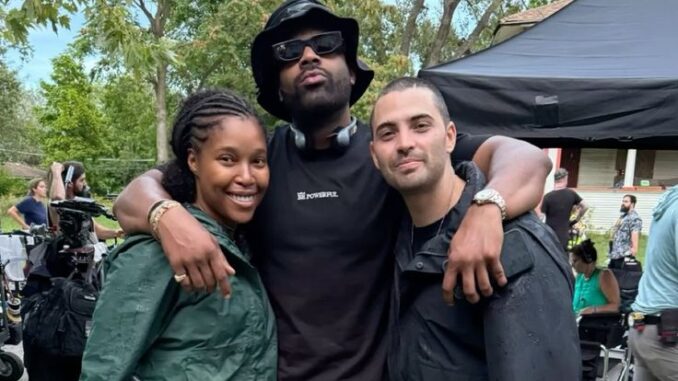
Chicago P.D., what you see on screen is a raw, adrenaline-fueled look at policing in one of America’s toughest cities. But what you may not see is the dedication, training, and intense preparation that goes into making those stories feel so real. Behind every gun drawn, every foot pursuit, and every tense interrogation is a team of actors who work tirelessly to embody the lives of police officers — and it all begins behind the badge.
While most fans notice the dramatic takedowns or the high-speed chases, the actors spend just as much time perfecting their physical approach as they do their emotional performance. The cast undergoes regular firearm and tactical training, using realistic replicas under the guidance of SWAT veterans. They rehearse room-clearing techniques in kill houses — specially designed training environments that simulate real-life building layouts. They’re taught to move like real officers, use cover correctly, and communicate with hand signals to maintain realism in high-stress scenarios. Marina Squerciati, who plays Kim Burgess, has spoken about how intense this training can be. “It’s exhausting, and sometimes terrifying,” she said in an interview. “But it makes you respect what real officers do even more.”
But it’s not just about physical preparation. Chicago P.D. thrives on emotional intensity, and that means the actors must also dig deep into the psychological toll of police work. Many have sat with detectives, studied real-life case files, and observed interviews to better understand how trauma and stress manifest over time. LaRoyce Hawkins, who portrays Kevin Atwater, often speaks about the responsibility of portraying a Black officer in today’s climate. He doesn’t just want to act — he wants to reflect truth. “We’re not just pretending to be cops,” Hawkins once said. “We’re telling human stories. Stories about fear, survival, corruption, and community.”

This level of emotional preparation is what gives the show its soul. The pain in Upton’s eyes when she’s forced to pull the trigger. The shaking in Burgess’s voice when she processes trauma. The internal war raging in Voight when justice clashes with the law. All of these performances are grounded in real psychology, in real conversations with those who’ve worn the uniform and lived to tell the tale.
The relationships between cast members off-screen are another reason the show hits so hard emotionally. The “Intelligence Unit” isn’t just a fictional team — it’s a family, on and off camera. Years of working together on location in the harsh Chicago winters, training together, and supporting one another through emotional scripts have created a genuine bond. Patrick John Flueger (Ruzek) has said that even in the most intense scenes, they trust each other completely. “When someone’s playing dead on set or getting thrown across a room, it’s easy to forget they’re acting — until they crack a joke between takes. That balance of intensity and friendship is what keeps us going.”
Filming on the streets of Chicago brings its own unique flavor. Unlike shows that rely on backlots or green screens, Chicago P.D. is deeply embedded in its namesake city. The actors often shoot scenes in real neighborhoods, dealing with unexpected traffic, loud bystanders, or bitter cold. But that unpredictability adds to the realism. The city itself becomes a character in the story — gritty, beautiful, complicated, and alive. Tracy Spiridakos (Hailey Upton) once noted that Chicago gives the show its edge. “The people here, the look of the city, the spirit — it’s a character all its own.”
All of this — the training, the emotion, the real locations — comes together to form a show that doesn’t just depict police work, it honors it. The stakes feel high not just because of the writing, but because the actors put themselves through the wringer to earn your belief. That’s why when Voight slams his fist on the table or when Burgess breaks down after a traumatic rescue, it hits hard. Because behind the scenes, these actors aren’t just playing cops — they’re living them, moment by moment, decision by decision, truth by painful truth.
